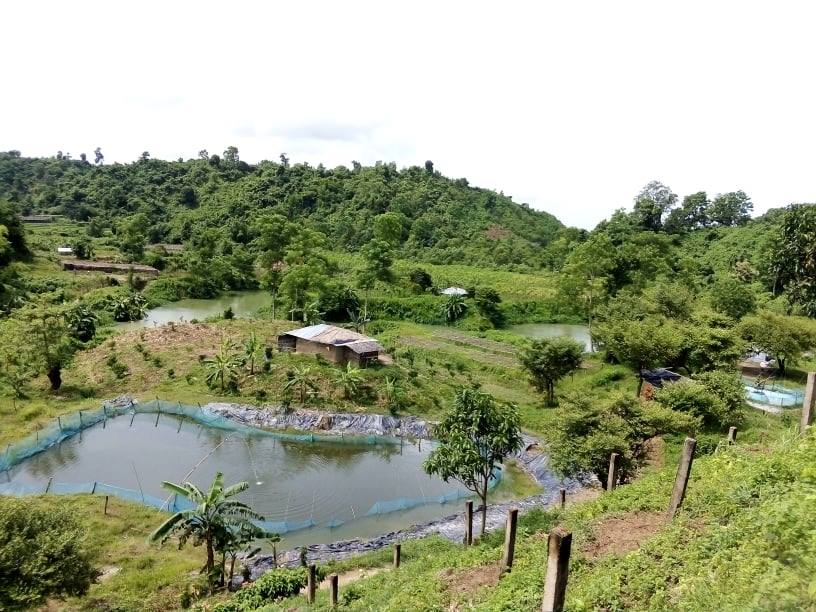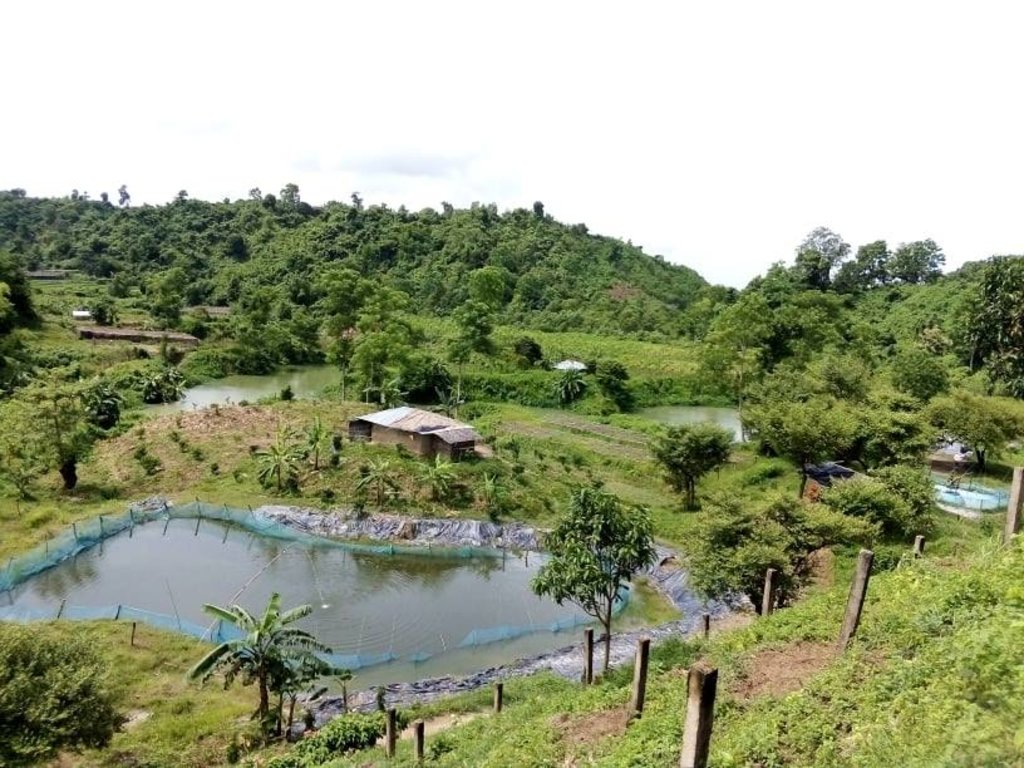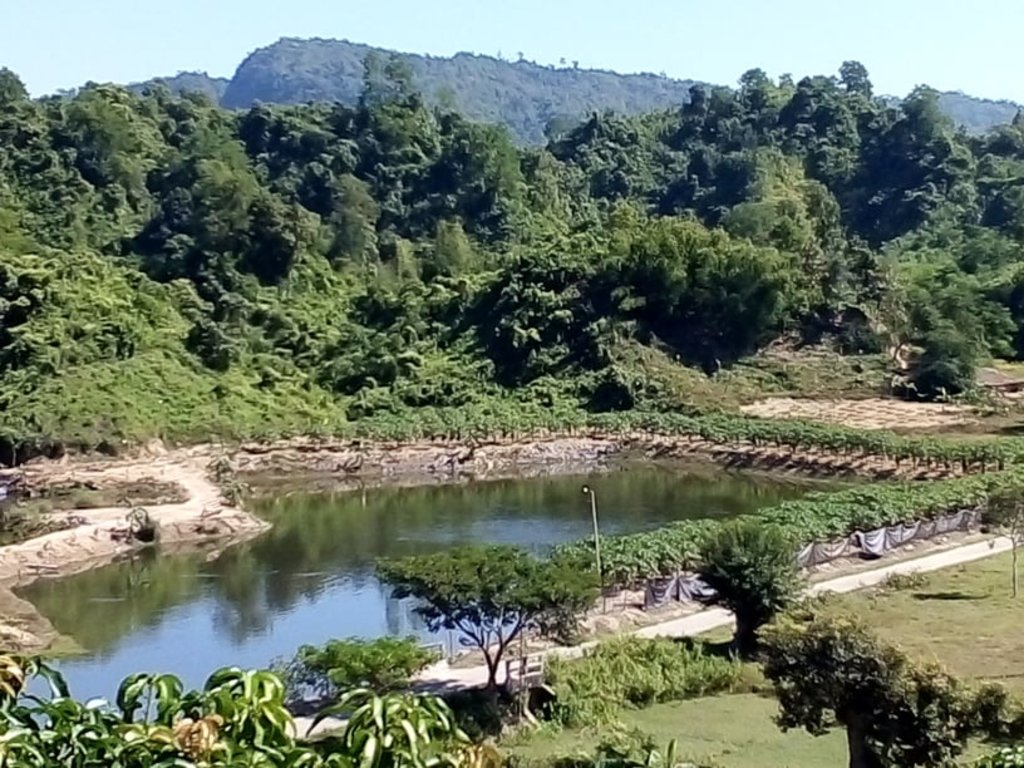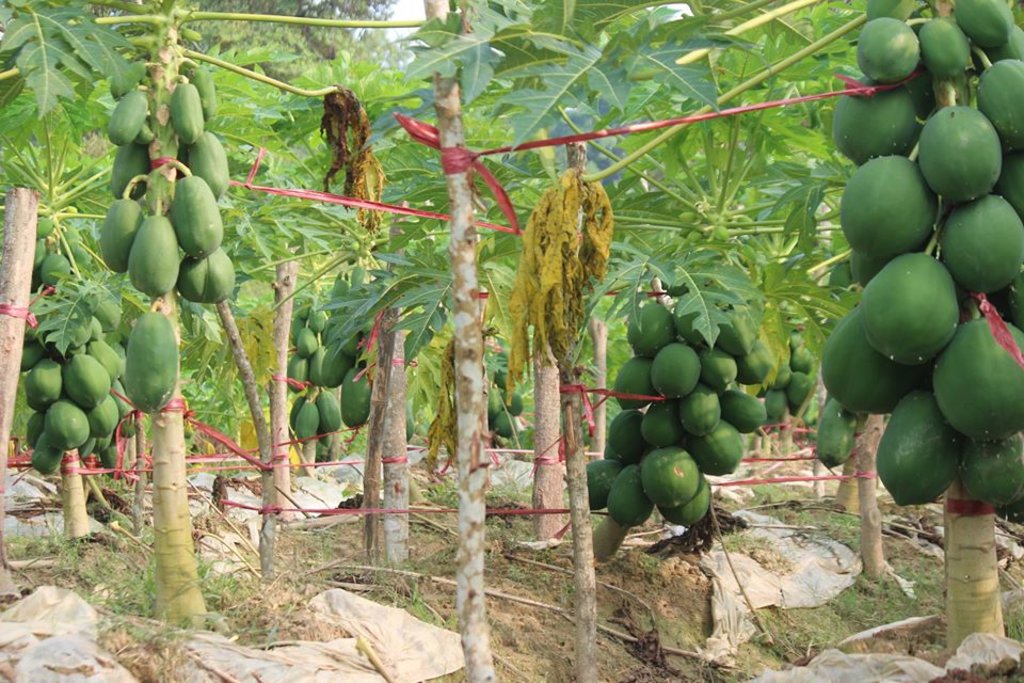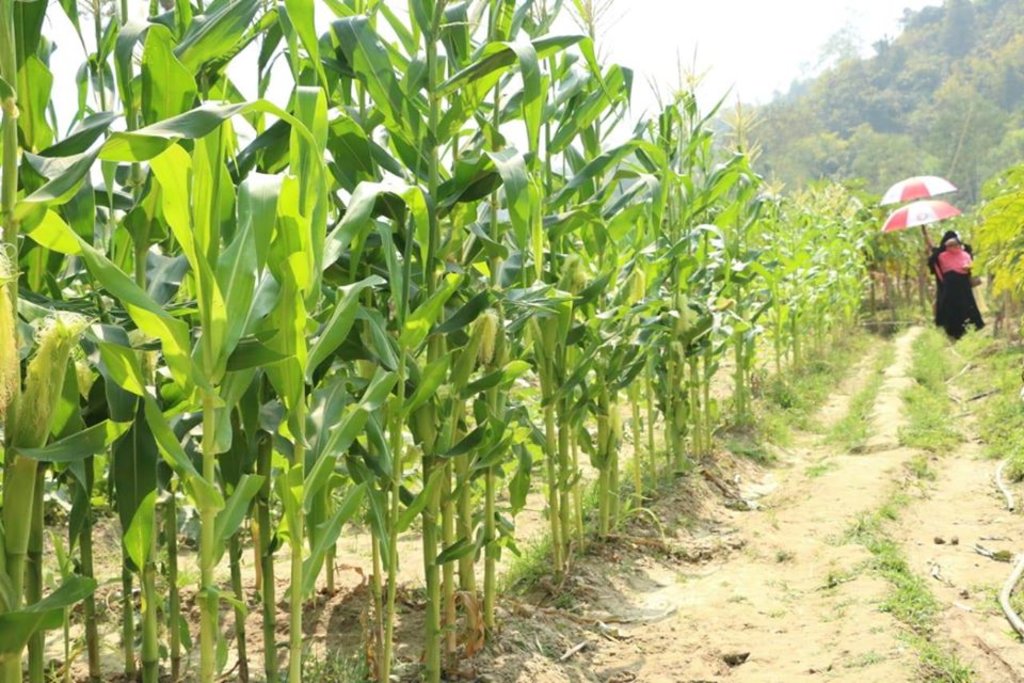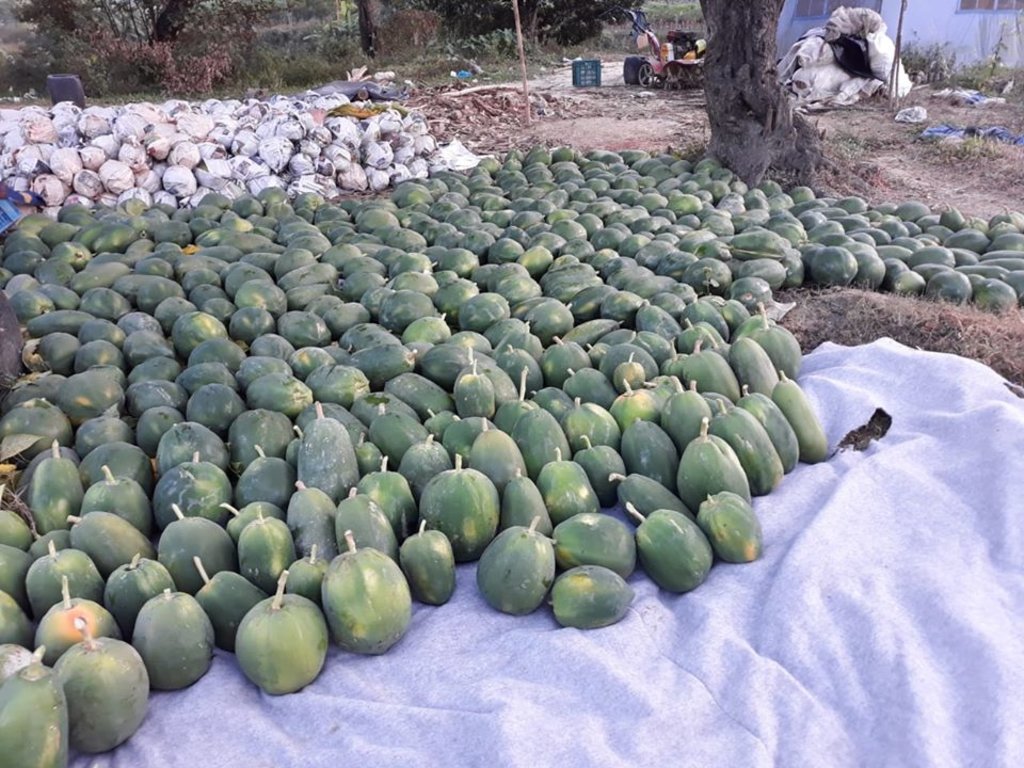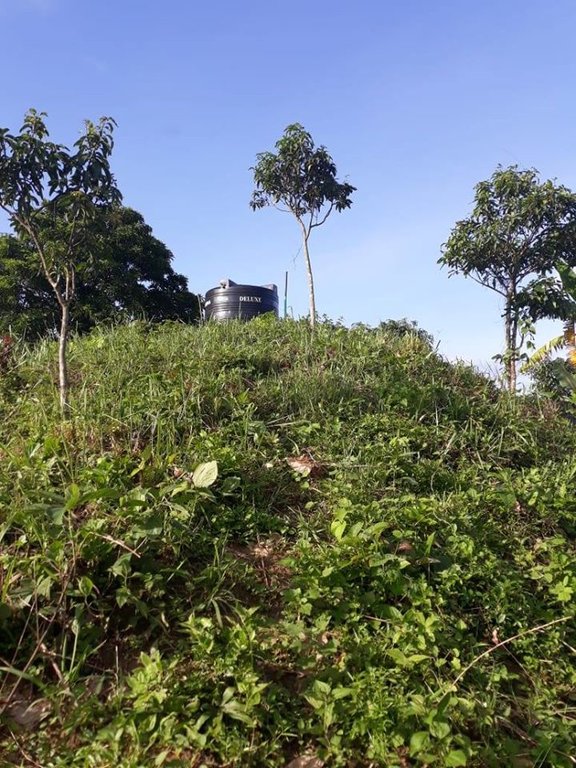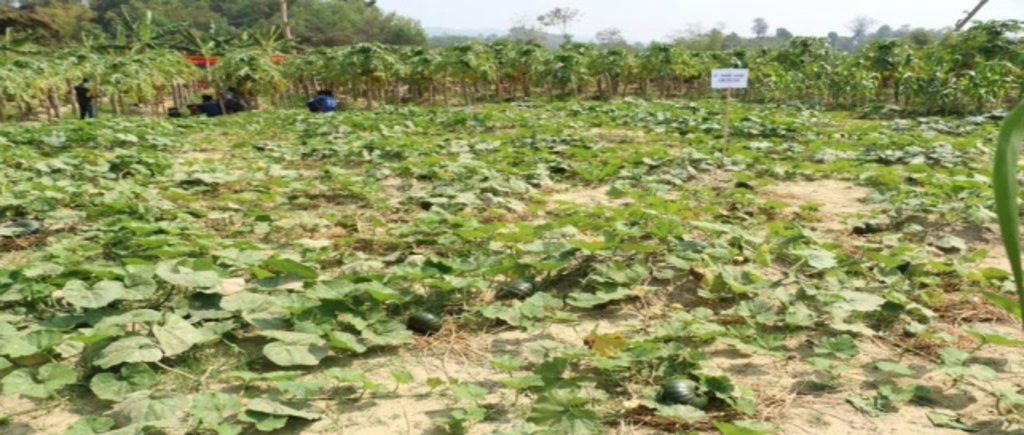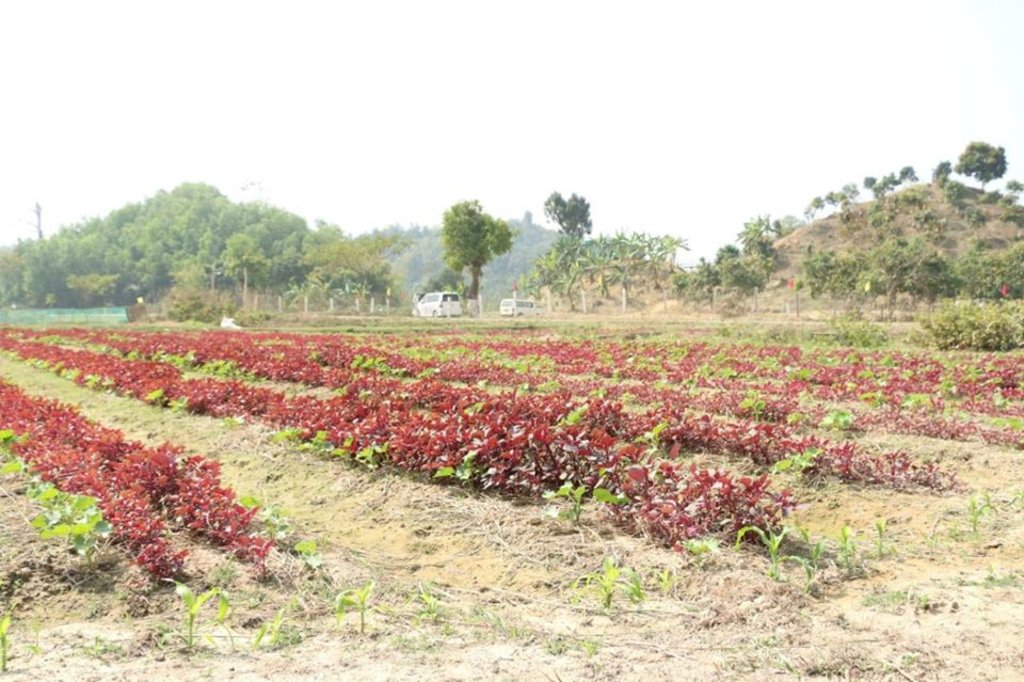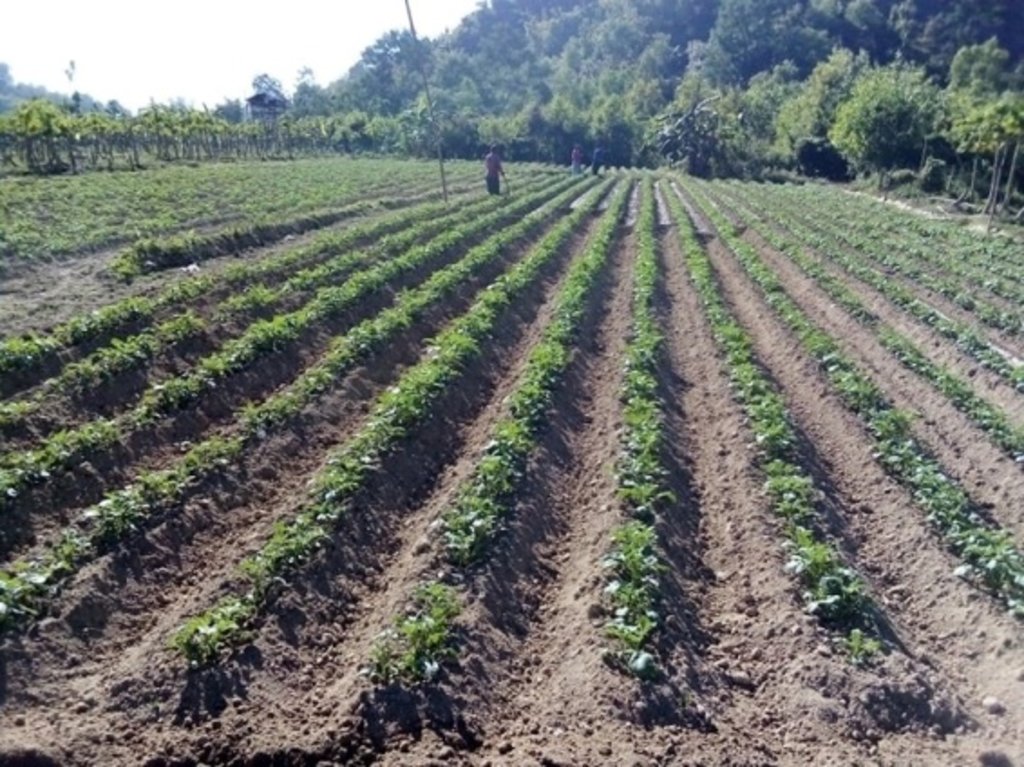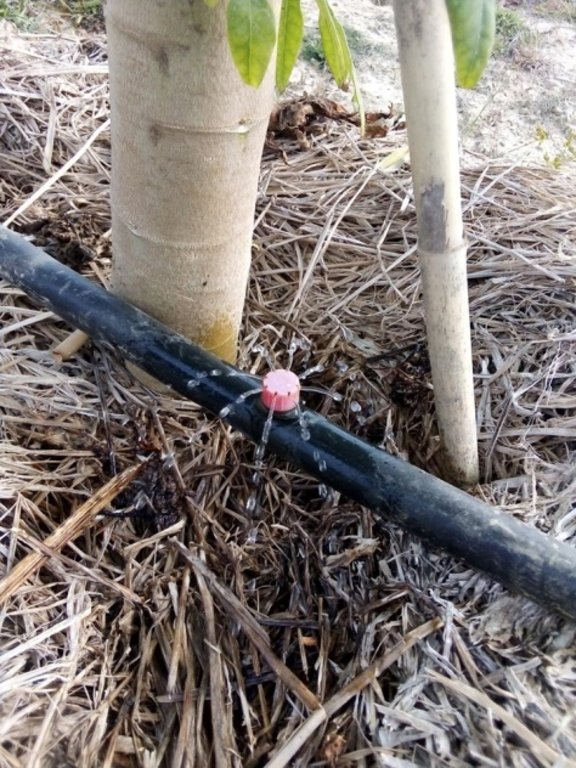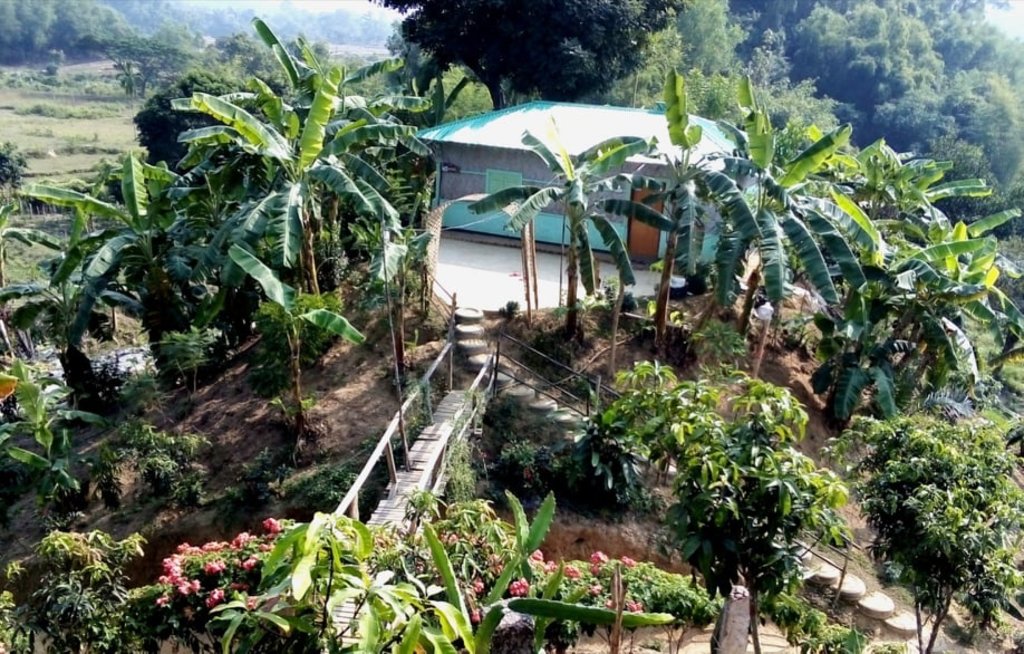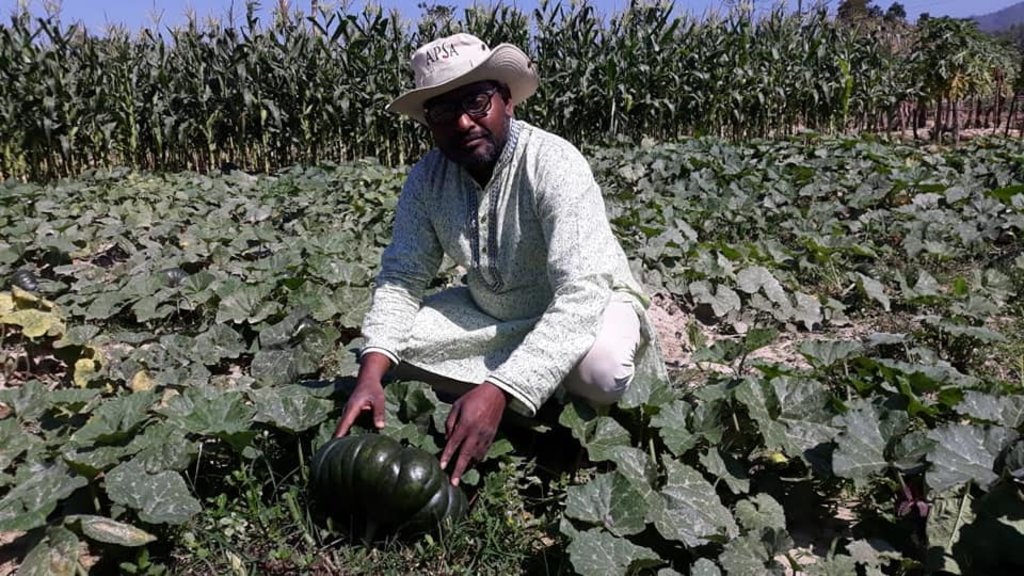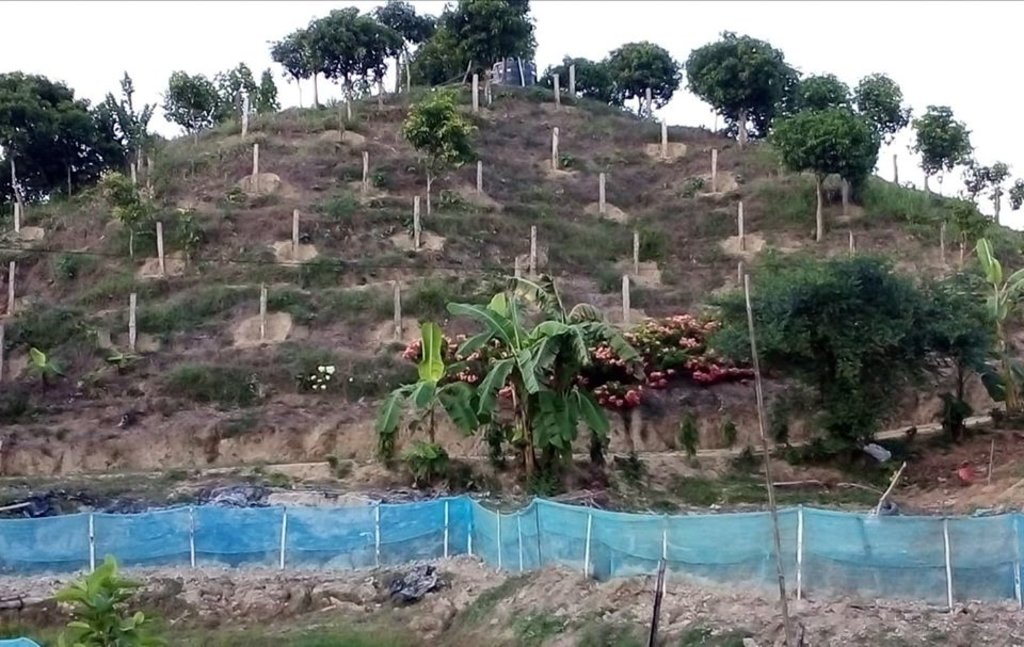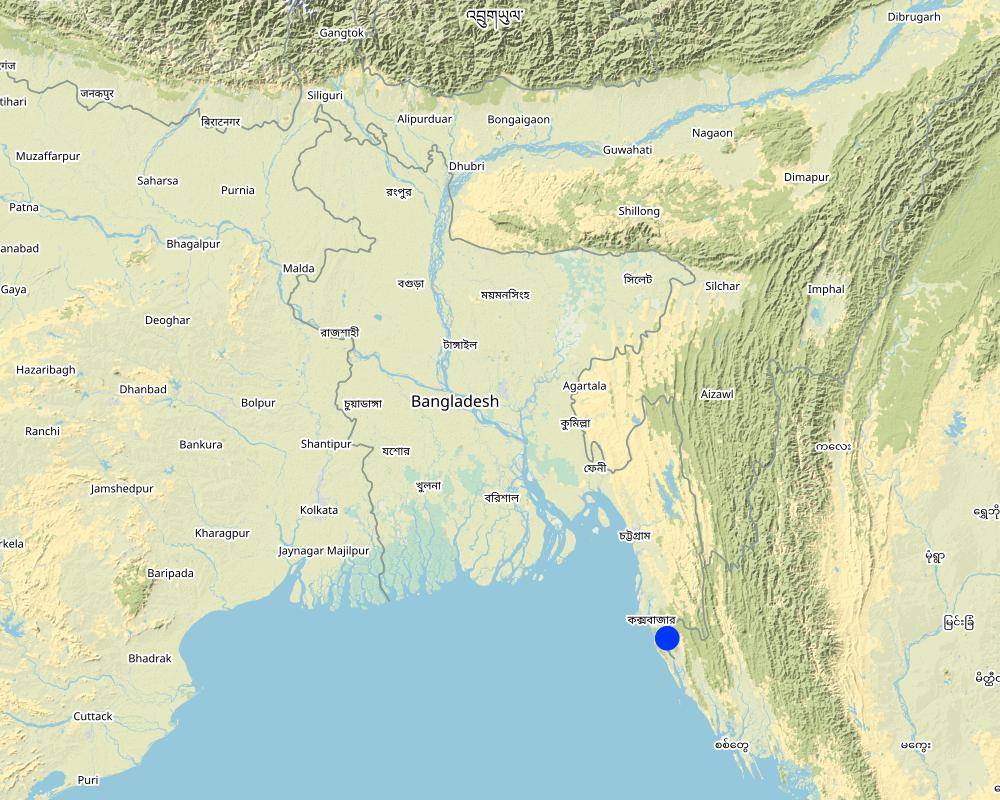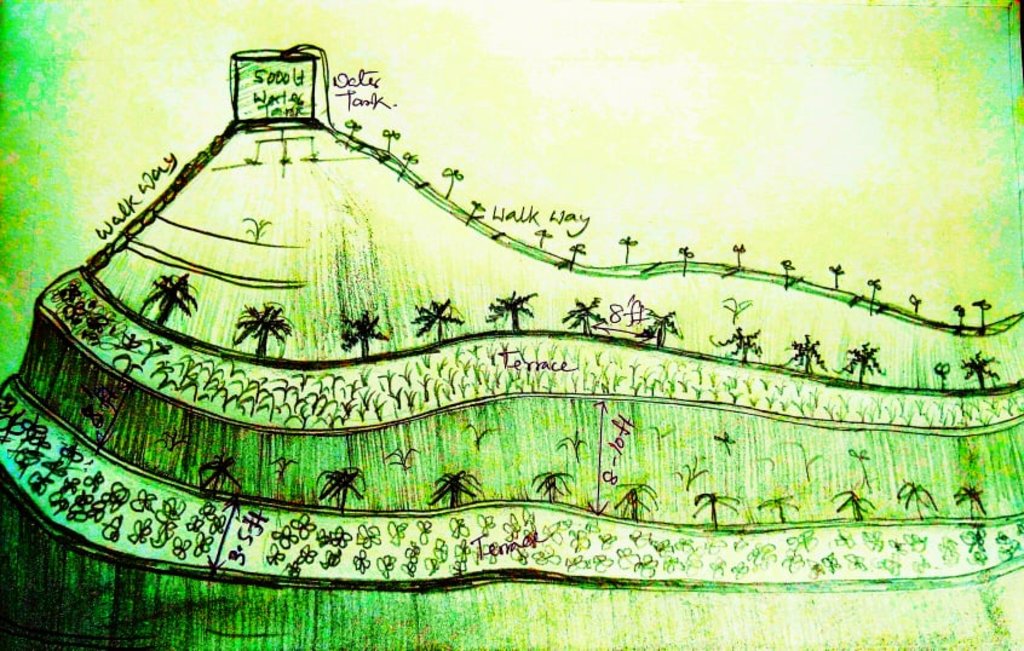Organic agro-ecotourism in the low hills of the Chittagong Hills Tract [บังกลาเทศ]
- ผู้สร้างสรรค์:
- การอัพเดท:
- ผู้รวบรวม: Jalal Uddin Md. Shoaib
- ผู้เรียบเรียง: –
- ผู้ตรวจสอบ: Rima Mekdaschi Studer, William Critchley
Somonnito khamar
technologies_5761 - บังกลาเทศ
ดูส่วนย่อย
ขยายทั้งหมด ย่อทั้งหมด1. ข้อมูลทั่วไป
1.2 รายละเอียดที่ติดต่อได้ของผู้รวบรวมและองค์กรที่เกี่ยวข้องในการประเมินและการจัดเตรียมทำเอกสารของเทคโนโลยี
วิทยากรหลัก
ผู้ใช้ที่ดิน:
Ahammad Kaiser Uddin
Organic Firm and Eco Park Limited, kaiseruddinahmed@gmail.com
บังกลาเทศ
ผู้เชี่ยวชาญ SLM:
1.3 เงื่อนไขการใช้ข้อมูลที่ได้บันทึกผ่านทาง WOCAT
ผู้รวบรวมและวิทยากรหลักยอมรับเงื่อนไขเกี่ยวกับการใช้ข้อมูลที่ถูกบันทึกผ่านทาง WOCAT:
ใช่
1.4 การเปิดเผยเรื่องความยั่งยืนของเทคโนโลยีที่ได้อธิบายไว้
เทคโนโลยีที่ได้อธิบายไว้นี้เป็นปัญหาของความเสื่อมโทรมโทรมของที่ดินหรือไม่ จึงไม่ได้รับการยอมรับว่าเป็นเทคโนโลยีเพื่อการจัดการที่ดินอย่างยั่งยืน:
ไม่ใช่
แสดงความคิดเห็น:
This technology could be an example of management of low hill landscapes enhancing agro-ecomanagement and tourism. The recent influx of plain land inhabitants of the country has increased many fold. This type of farming will reduce land degradation and in addition the area could be a boost to attract tourists.
2. การอธิบายลักษณะของเทคโนโลยี SLM
2.1 การอธิบายแบบสั้น ๆ ของเทคโนโลยี
คำจำกัดความของเทคโนโลยี:
Transforming an area of the denuded low hills of the Chittagong Hill Tracts (CHT) into an organic farm and tourism site
2.2 การอธิบายแบบละเอียดของเทคโนโลยี
คำอธิบาย:
A local four-member team of committed, young and skilled entrepreneurs, together with agriculture professionals, initiated the transformation of low denuded and abandoned hills in 2017 at Gorjonbonia, Gondom union, Naikshayangchari, Bandarban. Currently they are producing and marketing organic farm fresh products. The products are 50 (fifty) types of fruits and vegetables (including nursery plants and seedlings), fish, poultry, and diary product. They make and use trichoderma (a type of fungus) compost, banana choppings, vermicompost (from worms) and organic fertilizer in the 61 ha farm - which is half hill and half valley. The landscape has been transformed into green landscape with a natural lake. There are orchards, eco-cottages, an organic café and a restaurant with a fresh juice bar.
This eco-tourist center is only 50 minutes marine drive journey from Cox’s Bazar Airport. The farm is surrounded by highlands, and slopes have been protected by planting bananas, citrus (lemon), bamboo and forest plants to protect the slopes with vegetative cover. The farm group has gained its certified organic credentials and has become a member of the International Federation of Organic Agriculture Movements (IFOAM), and also of IFOAM Asia. The major activities and achievements are:
1. Creating a center of excellence in agro-ecotourism and organic farming in Bangladesh.
2. Enriching knowledge about organic production and agro-ecotourism by providing practical training and capacity building among local entrepreneurs.
3. Developing skills in organic farming and contract farming to produce healthy and environmently friendly farm products.
4. Establishing an organic agro-eco-park with commercial cropping, orchards, fish culture, livestock, a nursery and organic fertilizer and pesticides.
5. Attracting tourists to taste organic and farm-fresh safe food and to enjoy the natural beauty of the agro-eco-park.
6. Creating a thousand contract growers in an association surrounding the model park.
7. Acting as a responsible corporate citizen through CSR (Corporate Social Responsibility).
8. Creating and maintaining a strong customer value chain.
Adequate measures have been taken to stabilize hillside terraces by planting trees and natural bushes. Various crops are planted on the terraces including sweet corn and taro. A water tank is set on top of the hill at just over 100 meters elevation to provide irrigation to the trees in the orchards by drip irrigation – which avoids soil erosion. Water is harvested from hillside and captured by a small dam/dike. The farm park provides a hilly walk-way, where visitors can enjoy a hill stream and green hills with a large number of birds and monkeys. Boating, fishing and angling are pursuits provided. Visitors come to enjoy the agro-eco-park: they taste and buy - farm fresh fruits on the spot. As well as fruits, key products comprise vegetables, fish (from the sea as well as from aquaculture) and livestock products. There is a sales center in Cox's Bazar city.
2.3 รูปภาพของเทคโนโลยี
2.5 ประเทศภูมิภาค หรือสถานที่ตั้งที่เทคโนโลยีได้นำไปใช้และได้รับการครอบคลุมโดยการประเมินนี้
ประเทศ:
บังกลาเทศ
ระบุการกระจายตัวของเทคโนโลยี:
- ใช้ ณ จุดที่เฉพาะเจาะจงหรือเน้นไปยังบริเวณพื้นที่ขนาดเล็ก
Is/are the technology site(s) located in a permanently protected area?
ไม่ใช่
Map
×2.6 วันที่การดำเนินการ
ระบุปีที่ใช้:
2018
2.7 คำแนะนำของเทคโนโลยี
ให้ระบุว่าเทคโนโลยีถูกแนะนำเข้ามาอย่างไร:
- ด้วยการริเริ่มของผู้ใช้ที่ดินเอง
ความคิดเห็น (ประเภทของโครงการ เป็นต้น) :
The endeavor had a long journey since February- 2018 to establish an Integrated Organic Agro Eco Park in 61ha land. They manage the hill slope and the valley with adequate management measures to shape the area attractive, productive and changing bare/barren low hills to green. They have planted 400 Thai Guava, 1000 Banana, 250 Bari Malta-1, 250 Borai (Ziziphos) , 350 Dragon, 4000 Papaya, etc. There is a pond of about 3 ha for aquaculture, 20 cattle, 50 country laying chicken, one Eco Cottage and a sales center. The farm is very close to tourism city Cox’s Bazar and it is located at Nikkonchory, Bandarban district.
Previously the landscape was almost bare with some shrubs and the valley was cultivated for paddy only in rainy season. Now it is become a commercial Organic Agro Eco Park within very short time. They now produce and market Organic & Farm Fresh agro products, of which 20 types of Fruits, Vegetables, Fish, Poultry, Cattle, Nursery plants, readymade vegetable seedlings, Trichodarma compost and Organic fertilizer in this farm. There are 20 people working regularly as day labor of which female Chakma and Tonchinga-10 and male-10).
By and large a bare landscape had been transformed to green land cover with eco-tourism opportunities.
3. การจัดประเภทของเทคโนโลยี SLM
3.1 วัตถุประสงค์หลักของเทคโนโลยี
- ปรับปรุงการผลิตให้ดีขึ้น
- ลด ป้องกัน ฟื้นฟู การเสื่อมโทรมของที่ดิน
- อนุรักษ์ระบบนิเวศน์
3.2 ประเภทของการใช้ที่ดินในปัจจุบันที่ได้นำเทคโนโลยีไปใช้
Land use mixed within the same land unit:
ใช่
Specify mixed land use (crops/ grazing/ trees):
- วนเกษตร (Agroforestry)

พื้นที่ปลูกพืช
- การปลูกไม้ยืนต้น ไม้พุ่ม
- Mixed cropping: both annual and perenniall
จำนวนของฤดูเพาะปลูกต่อปี:
- 3
ระบุ:
Vegetables in rabi- vegetables in Kharif-1 and Vegetables in Kharif-2, in addition fruit crops in round the year.
Is intercropping practiced?
ไม่ใช่
Is crop rotation practiced?
ไม่ใช่

อื่น ๆ
ระบุ:
Tourism
ข้อสังเกต:
In addition to cropping, the area is also organized to be used for tourism. Fresh fruits and organic vegetables at a sales point, and a restaurant offering fresh juice etc, were set up to attract tourists.
3.3 Has land use changed due to the implementation of the Technology?
Has land use changed due to the implementation of the Technology?
- Yes (Please fill out the questions below with regard to the land use before implementation of the Technology)
Land use mixed within the same land unit:
ใช่
Specify mixed land use (crops/ grazing/ trees):
- วนเกษตร (Agroforestry)

พื้นที่ปลูกพืช
- การปลูกพืชยืนต้นที่ไม่มีเนื้อไม้
- Papaya, Dragon fruits etc.
3.4 การใช้น้ำ
การใช้น้ำของที่ดินที่มีการใช้เทคโนโลยีอยู่:
- น้ำฝนร่วมกับการชลประทาน
แสดงความคิดเห็น:
Surface water sources are hill streams and ponds, and there is a submersible deep tube well to provide irrigation (by drip)
3.5 กลุ่ม SLM ที่ตรงกับเทคโนโลยีนี้
- การปลูกป่าร่วมกับพืช
- การจัดการปลูกพืชร่วมกับปศุสัตว์
- การปรับปรุงดิน / พืชคลุมดิน
3.6 มาตรการ SLM ที่ประกอบกันเป็นเทคโนโลยี

มาตรการจัดการพืช
- A1: พืช/สิ่งปกคลุมดิน
- A2: อินทรียวัตถุในดิน/ความอุดมสมบูรณ์ในดิน

มาตรการอนุรักษ์ด้วยวิธีพืช
- V1: ต้นไม้และพุ่มไม้คลุมดิน

มาตรการอนุรักษ์ด้วยโครงสร้าง
- S1: คันดิน
- S2: ทำนบ เขื่อนดิน

มาตรการอนุรักษ์ด้วยการจัดการ
- M1: การเปลี่ยนรูปแบบของการใช้ประโยชน์ที่ดิน
- M2: การเปลี่ยนแปลงของการจัดการหรือระดับความเข้มข้น
- M3: การวางผังตามสิ่งแวดล้อมทางธรรมชาติและสิ่งแวดล้อมของมนุษย์
3.7 รูปแบบหลักของการเสื่อมโทรมของที่ดินที่ได้รับการแก้ไขโดยเทคโนโลยี

การกัดกร่อนของดินโดยน้ำ
- Wt (Loss of topsoil): การสูญเสียดินชั้นบนหรือการกัดกร่อนที่ผิวดิน

การเสื่อมโทรมของดินทางด้านเคมี
- Cn (Fertility decline): ความอุดมสมบูรณ์และปริมาณอินทรียวัตถุในดินถูกทำให้ลดลงไป (ไม่ได้เกิดจากสาเหตุการกัดกร่อน)

การเสื่อมโทรมของดินทางด้านชีวภาพ
- Bc (Reduction of vegetation cover): การลดลงของจำนวนพืชที่ปกคลุมดิน
3.8 การป้องกัน การลดลง หรือการฟื้นฟูความเสื่อมโทรมของที่ดิน
ระบุเป้าหมายของเทคโนโลยีกับความเสื่อมโทรมของที่ดิน:
- ลดความเสื่อมโทรมของดิน
- ฟื้นฟูบำบัดที่ดินที่เสื่อมโทรมลงอย่างมาก
4. ข้อมูลจำเพาะด้านเทคนิค กิจกรรมการนำไปปฏิบัติใช้ ปัจจัยนำเข้า และค่าใช้จ่าย
4.1 แบบแปลนทางเทคนิคของเทคโนโลยี
ข้อมูลจำเพาะด้านเทคนิค (แบบแปลนทางเทคนิคของเทคโนโลยี):
The technology had transformed a bare hilly areas to plantation on slopping lands and seasonal agricultural farm with time and space. The major activities are as follows:
1.Leasing the total land for 25 years from one land lord/owner by doing an registered agreement and mode of payment in every 5 years at rate of 3,60,000/- increasing at the rate of 20% of 3,60,000/-for next 4 installment so total lease money is BDT 19,44,000/-.
2.Infrastructural arrangements like make walk way to facilitate watch and ward; pond for fisheries, dam, dike and nursery etc, cost about BDT 30,00,000/-
3.Residential house for staff and labor shed preparation BDT 8,00,000/=
4.Agricultural machineries and agricultural tools/equipment like, LLP, generator, power line, mini tractor, etc BDT 6,00,000/=
5.Earth work, boundary fencing wire, pillar and live fencing etc BDT 6,00,000/-
6.Solar panel for electricity set up etc BDT 2,00,000/-
7.Irrigation system and drainage system set up BDT 7,00,000/-
8.Irrigation cost for 2500 papaya and others orchards BDT 5,00,000/-
9.Saplings of fruit trees, cattles, etc BDT 4,00,000/-
10.Plastic and bamboo materials and polythene for newly excavated pond dike and roads etc. BDT-3,00,000/=
11.Organic and Chemical fertilizer etc BDT 3,00,000/=
12.Labour and operation cost/expenses for 2 years (February 2018- December-2019) BDT 21,70,000/=
13.Staff salary and entertainment BDT 8,00,000/=
14.Vehicles and furniture etc. BDT 5,00,000/=
15.Travelling Transport, AGM, Meeting etc BDT 10,00,000/=
16.Fisheries, feed, Fringe, expert consultancy etc BDT 20,00,000/=
17.Computer and printers etc.BDT 55,000/-,
Approximately cost is more then 1, 20,00,000/=
ผู้เขียน:
Kaiser Uddin (One of the team members)
วันที่:
12/02/2020
4.2 ข้อมูลทั่วไปเกี่ยวกับการคำนวณปัจจัยนำเข้าและค่าใช้จ่าย
ให้ระบุว่าค่าใช้จ่ายและปัจจัยนำเข้าได้รับการคำนวณอย่างไร:
- ต่อพื้นที่ที่ใช้เทคโนโลยี
ระบุขนาดและหน่วยพื้นที่:
61 ha
อื่นๆ หรือสกุลเงินประจำชาติ (ระบุ):
BDT
If relevant, indicate exchange rate from USD to local currency (e.g. 1 USD = 79.9 Brazilian Real): 1 USD =:
105.0
ระบุค่าเฉลี่ยของค่าจ้างในการจ้างแรงงานต่อวัน:
BDT 500/day /person
4.4 ค่าใช้จ่ายของปัจจัยนำเข้าที่จำเป็นสำหรับการจัดตั้ง
If you are unable to break down the costs in the table above, give an estimation of the total costs of establishing the Technology:
12000000.0
ถ้าผู้ใช้ที่ดินรับภาระน้อยกว่า 100% ของค่าใช้จ่าย ให้ระบุว่าใครเป็นผู้รับผิดชอบส่วนที่เหลือ:
100%
แสดงความคิดเห็น:
Costs supported from the team and also from bank. as loan.
4.6 ค่าใช้จ่ายของปัจจัยนำเข้าและกิจกรรมที่เกิดขึ้นเป็นประจำที่ต้องการการบำรุงรักษา (ต่อปี)
If you are unable to break down the costs in the table above, give an estimation of the total costs of maintaining the Technology:
3000000.0
ถ้าผู้ใช้ที่ดินรับภาระน้อยกว่า 100% ของค่าใช้จ่าย ให้ระบุว่าใครเป็นผู้รับผิดชอบส่วนที่เหลือ:
100%
แสดงความคิดเห็น:
All cost born by the team and financial support from bank as loan. Note: exchange rate at time of writing was 85 BHT = US$, currently (end 2022) 105 BHT - US$
4.7 ปัจจัยสำคัญที่สุดที่มีผลกระทบต่อค่าใช้จ่าย
ปัจจัยสำคัญที่สุดที่มีผลกระทบต่อค่าใช้จ่ายต่างๆ:
Labor availability
5. สิ่งแวดล้อมทางธรรมชาติและของมนุษย์
5.1 ภูมิอากาศ
ฝนประจำปี
- < 250 ม.ม.
- 251-500 ม.ม.
- 501-750 ม.ม.
- 751-1,000 ม.ม.
- 1,001-1,500 ม.ม.
- 1,501-2,000 ม.ม.
- 2,001-3,000 ม.ม.
- 3,001-4,000 ม.ม.
- > 4,000 ม.ม.
เขตภูมิอากาศเกษตร
- กึ่งชุ่มชื้น
5.2 สภาพภูมิประเทศ
ค่าเฉลี่ยความลาดชัน:
- ราบเรียบ (0-2%)
- ลาดที่ไม่ชัน (3-5%)
- ปานกลาง (6-10%)
- เป็นลูกคลื่น (11-15%)
- เป็นเนิน (16-30%)
- ชัน (31-60%)
- ชันมาก (>60%)
ธรณีสัณฐาน:
- ที่ราบสูง/ที่ราบ
- สันเขา
- ไหล่เขา
- ไหล่เนินเขา
- ตีนเนิน
- หุบเขา
ระดับความสูง:
- 0-100 เมตร
- 101-500 เมตร
- 501-1,000 เมตร
- 1,001-1,500 เมตร
- 1,501-2,000 เมตร
- 2,001-2,500 เมตร
- 2,501-3,000 เมตร
- 3,001-4,000 เมตร
- > 4,000 เมตร
ให้ระบุถ้าเทคโนโลยีได้ถูกนำไปใช้:
- บริเวณสันเขา (convex situations)
ความคิดเห็นและข้อมูลจำเพาะเพิ่มเติมเรื่องสภาพภูมิประเทศ:
Low hills with valleys and hill streams
5.3 ดิน
ค่าเฉลี่ยความลึกของดิน:
- ตื้นมาก (0-20 ซ.ม.)
- ตื้น (21-50 ซ.ม.)
- ลึกปานกลาง (51-80 ซ.ม.)
- ลึก (81-120 ซ.ม.)
- ลึกมาก (>120 ซ.ม.)
เนื้อดิน (ดินชั้นบน):
- ปานกลาง (ดินร่วน ทรายแป้ง)
เนื้อดินล่าง (> 20 ซ.ม.ต่ำจากผิวดิน):
- ปานกลาง (ดินร่วน ทรายแป้ง)
อินทรียวัตถุในดิน:
- ต่ำ (<1%)
5.4 ความเป็นประโยชน์และคุณภาพของน้ำ
ระดับน้ำใต้ดิน:
5-50 เมตร
น้ำไหลบ่าที่ผิวดิน:
เกินพอ
คุณภาพน้ำ (ที่ยังไม่ได้บำบัด):
เป็นน้ำเพื่อการดื่มที่ดี
Water quality refers to:
both ground and surface water
ความเค็มของน้ำเป็นปัญหาหรือไม่:
ไม่ใช่
กำลังเกิดน้ำท่วมในพื้นที่หรือไม่:
ใช่
บ่อยครั้ง:
เป็นครั้งเป็นคราว
ความคิดเห็นและข้อมูลจำเพาะเพิ่มเติมเรื่องคุณภาพและปริมาณน้ำ:
Valleys sometimes subject to flash floods
5.5 ความหลากหลายทางชีวภาพ
ความหลากหลายทางชนิดพันธุ์:
- ปานกลาง
ความหลากหลายของแหล่งที่อยู่:
- ปานกลาง
ความคิดเห็นและข้อมูลจำเพาะเพิ่มเติมของความหลากหลายทางชีวภาพ:
Before farming the hills were almost denuded and valleys were remain fallow or grow poor crops (Betel leaf).
5.6 ลักษณะของผู้ใช้ที่ดินที่นำเทคโนโลยีไปปฏิบัติใช้
อยู่กับที่หรือเร่ร่อน:
- อยู่กับที่
แนวทางการตลาดของระบบการผลิต:
- ทำการค้า/การตลาด
รายได้ที่มาจากนอกฟาร์ม:
- 10-50% ของรายได้ทั้งหมด
ระดับของความมั่งคั่งโดยเปรียบเทียบ:
- รวย
เป็นรายบุคคล/ครัวเรือน:
- กลุ่ม/ชุมชน
ระดับของการใช้เครื่องจักรกล:
- งานที่ใช้แรงกาย
- การใช้เครื่องจักรหรือเครื่องยนต์
เพศ:
- ชาย
อายุของผู้ใช้ที่ดิน:
- วัยกลางคน
ระบุลักษณะอื่นๆที่เกี่ยวข้องของผู้ใช้ที่ดิน:
The users are a team or group of 4 peoples of the area. They have different background like Agriculturist, Banker, Businessmen and land owners of the area.
5.7 Average area of land used by land users applying the Technology
- < 0.5 เฮกตาร์
- 0.5-1 เฮกตาร์
- 1-2 เฮกตาร์
- 2-5 เฮกตาร์
- 5-15 เฮกตาร์
- 15-50 เฮกตาร์
- 50-100 เฮกตาร์
- 100-500 เฮกตาร์
- 500-1,000 เฮกตาร์
- 1,000-10,000 เฮกตาร์
- >10,000 เฮกตาร์
พิจารณาว่าเป็นขนาดเล็ก กลาง หรือขนาดใหญ่ (ซึ่งอ้างอิงถึงบริบทระดับท้องถิ่น):
- ขนาดใหญ่
5.8 กรรมสิทธิ์ในที่ดิน สิทธิในการใช้ที่ดินและสิทธิในการใช้น้ำ
กรรมสิทธิ์ในที่ดิน:
- บริษัท
สิทธิในการใช้ที่ดิน:
- เช่า
สิทธิในการใช้น้ำ:
- เข้าถึงได้แบบเปิด (ไม่ได้จัดระเบียบ)
Are land use rights based on a traditional legal system?
ใช่
5.9 การเข้าถึงบริการและโครงสร้างพื้นฐาน
สุขภาพ:
- จน
- ปานกลาง
- ดี
การศึกษา:
- จน
- ปานกลาง
- ดี
ความช่วยเหลือทางด้านเทคนิค:
- จน
- ปานกลาง
- ดี
การจ้างงาน (เช่น ภายนอกฟาร์ม):
- จน
- ปานกลาง
- ดี
ตลาด:
- จน
- ปานกลาง
- ดี
พลังงาน:
- จน
- ปานกลาง
- ดี
ถนนและการขนส่ง:
- จน
- ปานกลาง
- ดี
น้ำดื่มและการสุขาภิบาล:
- จน
- ปานกลาง
- ดี
บริการด้านการเงิน:
- จน
- ปานกลาง
- ดี
แสดงความคิดเห็น:
The team consists of members , who have skill and capacity to deal with the system.
6. ผลกระทบและสรุปคำบอกกล่าว
6.1 ผลกระทบในพื้นที่ดำเนินการ (On-site) จากการใช้เทคโนโลยี
ผลกระทบทางด้านเศรษฐกิจและสังคม
การผลิต
การผลิตพืชผล
จำนวนก่อน SLM:
It was a denuded area
หลังจาก SLM:
different types of crop grown
คุณภาพพืชผล
แสดงความคิดเห็น/ระบุ:
Crops are organic
การผลิตพืชที่ใช้เลี้ยงปศุสัตว์
แสดงความคิดเห็น/ระบุ:
Fodder produce for the cattle they are raring
ความหลากหลายของผลิตภัณฑ์
แสดงความคิดเห็น/ระบุ:
A good number of crops grown
รายได้และค่าใช้จ่าย
รายได้จากฟาร์ม
แสดงความคิดเห็น/ระบุ:
They grow crops for market and they have good access to markets
ผลกระทบด้านสังคมวัฒนธรรมอื่น ๆ
SLM หรือความรู้เรื่องความเสื่อมโทรมของที่ดิน
ผลกระทบด้านนิเวศวิทยา
ดิน
ความชื้นในดิน
สิ่งปกคลุมดิน
การสูญเสียดิน
อินทรียวัตถุในดิน/ต่ำกว่าดินชั้น C
ความหลากหลายทางชีวภาพของพืชและสัตว์
การปกคลุมด้วยพืช
ความหลากหลายทางชีวภาพของพืช
ลดความเสี่ยงของภัยพิบัติ
ดินถล่ม/ ซากต่าง ๆ ที่ถูกพัดพามา
ภูมิอากาศจุลภาค
6.2 ผลกระทบนอกพื้นที่ดำเนินการ (Off-site) จากการใช้เทคโนโลยี
น้ำที่ใช้ประโยชน์ได้
การไหลของน้ำคงที่และสม่ำเสมอในช่วงฤดูแล้ง
น้ำท่วมพื้นที่ท้ายน้ำ
การทับถมของดินตะกอนพื้นที่ท้ายน้ำ
6.3 การเผชิญและความตอบสนองของเทคโนโลยีต่อการเปลี่ยนแปลงสภาพภูมิอากาศที่ค่อยเป็นค่อยไป และสภาพรุนแรงของภูมิอากาศ / ภัยพิบัติ (ที่รับรู้ได้โดยผู้ใช้ที่ดิน)
การเปลี่ยนแปลงสภาพภูมิอากาศที่ค่อยเป็นค่อยไป
การเปลี่ยนแปลงสภาพภูมิอากาศที่ค่อยเป็นค่อยไป
| ฤดู | increase or decrease | เทคโนโลยีมีวิธีการรับมืออย่างไร | |
|---|---|---|---|
| อุณหภูมิประจำปี | ลดลง | ปานกลาง | |
| อุณหภูมิตามฤดูกาล | ฤดูร้อน | ลดลง |
สภาพรุนแรงของภูมิอากาศ (ภัยพิบัติ)
ภัยพิบัติจากน้ำ
| เทคโนโลยีมีวิธีการรับมืออย่างไร | |
|---|---|
| น้ำท่วมฉับพลัน | ปานกลาง |
| ดินถล่ม | ปานกลาง |
แสดงความคิดเห็น:
Annual temperature is relatively lower as reported by the local people due to landscape cover.
6.4 การวิเคราะห์ค่าใช้จ่ายและผลประโยชน์ที่ได้รับ
ผลประโยชน์ที่ได้รับเปรียบเทียบกับค่าใช้จ่ายในการจัดตั้งเป็นอย่างไร (จากมุมมองของผู้ใช้ที่ดิน)
ผลตอบแทนระยะสั้น:
ด้านลบเล็กน้อย
ผลตอบแทนระยะยาว:
ด้านบวกอย่างมาก
ผลประโยชน์ที่ได้รับเปรียบเทียบกับค่าใช้จ่ายในการบำรุงรักษาหรือต้นทุนที่เกิดขึ้นซ้ำอีก เป็นอย่างไร (จากมุมมองของผู้ใช้ที่ดิน)
ผลตอบแทนระยะสั้น:
ด้านบวกเล็กน้อย
ผลตอบแทนระยะยาว:
ด้านบวกอย่างมาก
แสดงความคิดเห็น:
Initial tasks were challenging. Right from one year after the establishment the farm produced vegetables and fish, cattle, poultry etc that benefited the user.
6.5 การปรับตัวของเทคโนโลยี
- ครั้งเดียวหรือเป็นการทดลอง
6.6 การปรับตัว
เทคโนโลยีได้รับการปรับเปลี่ยนเมื่อเร็วๆนี้ เพื่อให้ปรับตัวเข้ากับสภาพที่กำลังเปลี่ยนแปลงหรือไม่:
ใช่
ถ้าตอบว่าใช่ ให้ระบุว่าเงื่อนไขการเปลี่ยนแปลงใดที่ถูกปรับตัว:
- การเปลี่ยนแปลงของตลาด
ให้ระบุการปรับตัวของเทคโนโลยี (การออกแบบ วัสดุหรือชนิดพันธุ์ เป็นต้น):
Small endeavour observed with their own choice of crops and fruits
6.7 จุดแข็ง / ข้อได้เปรียบ / โอกาสของเทคโนโลยี
| จุดแข็ง / ข้อได้เปรียบ / โอกาสในทัศนคติของผู้ใช้ที่ดิน |
|---|
| Low hills and periphery were best used |
| As the area close to Cox's Bazar city it attracts tourist on their way to Teknaf/Saint martin |
| Organic farming |
| Can earn per year from fruits (Papaya & others) BDT 32,00,000, vegetables, etc 5,00,000, Diary 5,00,000, Fisheries 30,00,000, poultry 2,00,000 lacs and from tourists 2,00,000. |
| จุดแข็ง / ข้อได้เปรียบ / โอกาสในทัศนคติของผู้รวบรวมหรือวิทยากรหลัก |
|---|
| An ideal hill management |
| Capacity building of the local peoples. |
| Tourism besides organic agriculture |
6.8 จุดอ่อน / ข้อเสียเปรียบ / ความเสี่ยงของเทคโนโลยีและวิธีการแก้ไข
| จุดอ่อน / ข้อเสียเปรียบ / ความเสี่ยงในทัศนคติของผู้ใช้ที่ดิน | มีวิธีการแก้ไขได้อย่างไร |
|---|---|
| Marketing is a problem | Setting outlets in townships in addition to farm gate sales center |
| No processing unit | Small scale processing unit installation. |
| Huge private investment, slow return | 1. Support from financial institution, 2. growing (high value) short term vegetables and fruit to sustain regular maintenance cost. |
| จุดอ่อน / ข้อเสียเปรียบ / ความเสี่ยงในทัศนคติของผู้รวบรวมหรือวิทยากรหลัก | มีวิธีการแก้ไขได้อย่างไร |
|---|---|
| No temporary storage facility | Processing shed needed |
| No or weak packaging options at farm level | Increase capacity for packaging and storage at farm level |
| Skill labor engagement in peak time specially during planting and harvesting period | Developing labour team. |
| Not protected from trespassers | Setting boundary to guard from trespasser |
7. การอ้างอิงและการเชื่อมต่อ
7.1 วิธีการและแหล่งข้อมูล
- ไปเยี่ยมชมภาคสนาม การสำรวจพื้นที่ภาคสนาม
Labor- 10 of the farm and visitors 12
- การสัมภาษณ์กับผู้ใช้ที่ดิน
The management team- nos 5,
วันที่เก็บรวบรวมข้อมูล(ภาคสนาม) :
12/02/2020
ลิงก์และโมดูล
ขยายทั้งหมด ย่อทั้งหมดลิงก์
ไม่มีลิงก์
โมดูล
ไม่มีโมดูล


